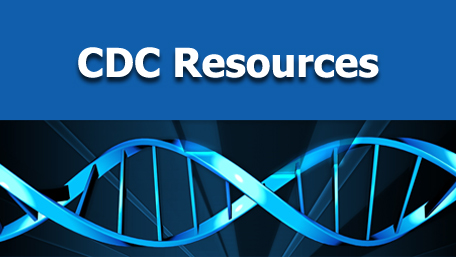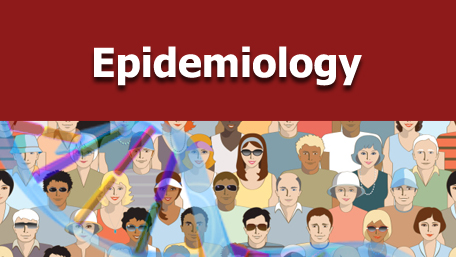National Prematurity Awareness Month
In 2015, about 1 out of 10 babies was born too early in the United States. Learn about the problem, risk factors, and what we can do to reduce premature birth.
About Premature Birth
Important growth and development occur throughout pregnancy—including in the final months and weeks. Premature (also known as preterm) birth is when a baby is born too early, before 37 weeks of pregnancy have been completed. The earlier a baby is born, the higher the risk of death or serious disability. In 2013, about one-third (36%) of infant deaths were due to preterm-related causes. Babies who survive can have breathing issues, intestinal (digestive) problems, and bleeding in their brains. Long-term problems may include developmental delay (not meeting the developmental milestones for his or her age) and lower performance in school.
Preterm Birth in the United States
Reducing preterm birth is a national public health priority. Preterm birth rates decreased from 2007 to 2014 and CDC research shows the decline in preterm births is partly due to fewer teens and young women becoming pregnant. Despite this success, the preterm birth rate rose slightly in 2015 and about 1 out of 10 babies (10%) was born too soon in the United States. Additionally, racial and ethnic differences in preterm birth rates remain. In 2015, the rate of preterm birth among non-Hispanic black women (13%) was about 50% higher than the rate of preterm birth among non-Hispanic white women (9%).
Risk Factors
Experts don't know all the reasons that some babies are born too soon. Even if a woman does everything "right" during pregnancy, she still can have a preterm birth. Some things (called risk factors) can increase the chance that a woman will have a preterm birth.
In addition to race, risk factors for preterm birth include—
- Social characteristics
- Teens
- Women over age 35 years
- Low socioeconomic (a measure that typically includes income, education, and occupation) position
- Health behaviors
- Tobacco use
- Alcohol or drug abuse
- Low or high body mass index (a measure of weight status calculated from weight and height)
- Medical and pregnancy characteristics
- Mental health (stress, depression)
- Pregnancy history (short time between pregnancies, delivering a baby preterm in the past, carrying more than one baby)
- Pregnancy complications
- Medical disorders (thyroid disease, obesity, asthma, diabetes, high blood pressure)
- Fertility treatments (assisted reproductive technology or other treatments)
- Infection within the uterus
What Can We Do?
- Providing women age 18–44 access to health care before and between pregnancies;
- Identifying women at risk for giving birth too early and offering effective treatments to prevent preterm birth;
- Discouraging deliveries before 39 weeks without a medical need;
- Preventing unintended pregnancies and achieving ideal length of time between pregnancies (birth spacing); and
- Electing single embryo transfer as appropriate to reduce multiple births when undergoing in vitro fertilization.
CDC Activities
CDC's Division of Reproductive Health is engaged in a variety of activities to reduce preterm delivery and complications.
- The Maternal and Child Health Epidemiology Program (MCHEP) supports state, local, and tribal agencies and organizations to effectively use maternal and child health epidemiologic research and scientific information to improve public health programs and policies related to women, children, and families' health. In 2016, MCHEP had 14 MCH Epidemiology assignees, four MCH Council of State and Territorial Epidemiology fellows, and two Epidemic Intelligence Service Officers located in state health departments.
- CDC collaborates with national, state, tribal, and territorial organizations and partners to increase awareness of preterm birth and its consequences and translate science into medical and public health practice. Ongoing collaborations involve the American College of Obstetricians and Gynecologists, the American Academy of Pediatrics, the March of Dimes, the Collaboration on Innovation and Improvement Network, the Association of State and Territorial Health Officials' Healthy Babies Initiative, and state-based perinatal quality collaboratives.
- CDC provides support to state-based perinatal quality collaboratives, which are networks of perinatal care providers and public health professionals working to improve pregnancy outcomes for women and newborns by advancing evidence-based clinical practices and processes through continuous quality improvement. CDC is currently providing support for perinatal quality collaboratives in California, Illinois, Massachusetts, New York, North Carolina, and Ohio.
Public Health Genomics Knowledge Base (v1.2)


Last Updated: Nov 08, 2016
- National Prematurity Awareness Month
- An investigation of APOL1 risk genotypes and preterm birth in African American population cohorts.
Robertson Catherine C, et al. Nephrology, dialysis, transplantation : official publication of the European Dialysis and Transplant Association - European Renal Association 2016 9 - Maternal Interleukin Genotypes Are Associated With NICU Outcomes Among Low-Birth-Weight Infants.
Baumgartel Kelley L, et al. Biological research for nursing 2016 9 - Early Erythropoietin Administration does not Increase the Risk of Retinopathy in Preterm Infants.
Chou Hsin-Hsu, et al. Pediatrics and neonatology 2016 6 - The association between antioxidant enzyme polymorphisms and cerebral palsy after perinatal hypoxic-ischaemic encephalopathy.
Esih Katarina, et al. European journal of paediatric neurology : EJPN : official journal of the European Paediatric Neurology Society 2016 6 - Impact of Prematurity and Perinatal Antibiotics on the Developing Intestinal Microbiota: A Functional Inference Study.
Arboleya Silvia, Sánchez Borja, Solís Gonzalo, Fernández Nuria, Suárez Marta, Hernández-Barranco Ana M, Milani Christian, Margolles Abelardo, de Los Reyes-Gavilán Clara G, Ventura Marco, Gueimonde Miguel.International journal of molecular sciences 0 (5) - Genetic Variation Associated with Preterm Birth in African-American Women.
Frey Heather A, et al. American journal of obstetrics and gynecology 2016 3 - Molecular Genetic Dissection and Neonatal/Infantile Intrahepatic Cholestasis Using Targeted Next-Generation Sequencing.
Togawa Takao, et al. The Journal of pediatrics 2016 2 - Correlation of interactions between NOS3 polymorphisms and oxygen therapy with retinopathy of prematurity susceptibility.
Yu Chunhong, et al. International journal of clinical and experimental pathology 2015 0 (11) 15250-4 - Genomics of Preterm Birth-Evidence of Association and Evolving Investigations.
McPherson Jessica A, et al. American journal of perinatology 2016 1 - Preterm labour: summary of NICE guidance
BMJ, November 23, 2015 - Public Health Grand Rounds: Strategies to Prevent Preterm Birth
- Genetic Program Manual for Local Health Departments (August, 2008) (Iowa)[PDF 2.45 MB]
Disease: Multiple Diseases; Type: Tools|Program; State: Illinois - NBS Screening for Metabolic and Sickle Cell Disorders
Disease: NA; Type: Program; State: Georgia - Preterm Birth

- CDC Information (4)
- CDC-Authored Pub (0)


- Human (90)
- Pathogen (0)

- Human (1)
- Pathogen (0)

- Guidelines (0)
- Tier Table (0)
- Synthesis (1)

- Huamn (2)
- Pathogen (0)
 Prematurity
Prematurity






















.png)











No hay comentarios:
Publicar un comentario